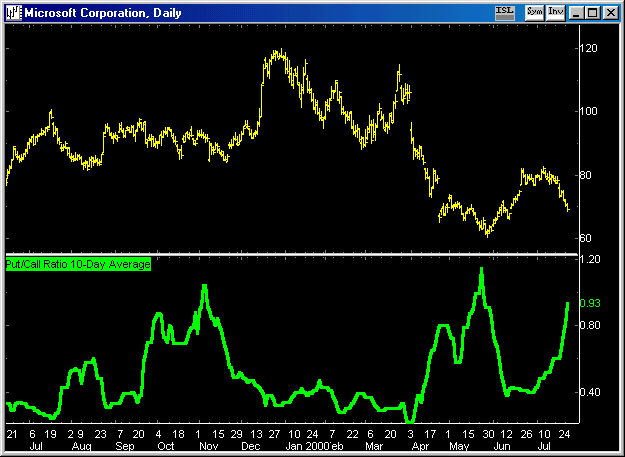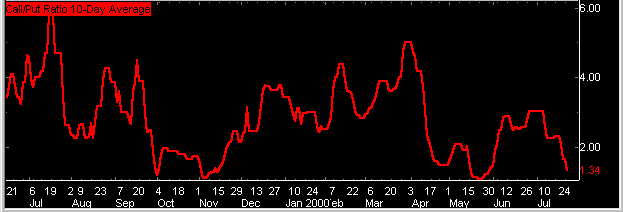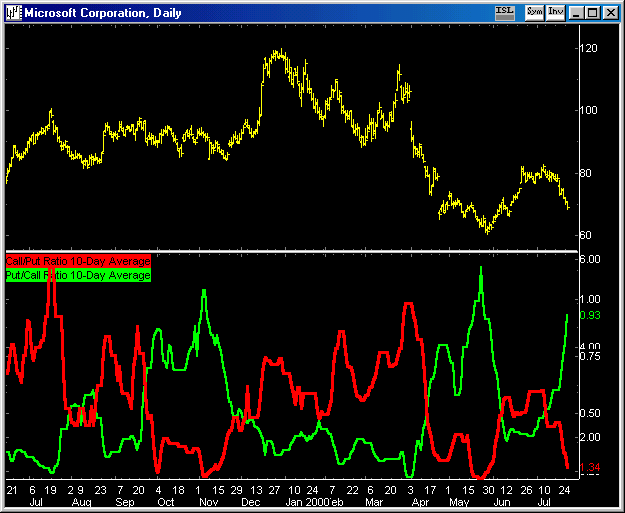|
STRATEGIES
We Use Equity Options Data As
Buy and Sell Setups
Phil Erlanger Research has developed a proprietary database of
equity options data that uncovers the excesses of bullish and bearish
expectations. This is of value because markets tend to move against
large crowds. Let's examine this in detail.
There are four (4) components of equity options data that we focus
on:
| Volume Ratio of Contracts |
| Open Interest Ratio of Contracts |
| Erlanger Premium Ratio |
| $ Money Flow Ratio |
We look at both put/call and call/put ratios of each of the above
four data series. For example, the following graphic is the put/call
ratio for MSFT:

The higher the put/call ratio, the greater the activity in put
options relative to calls, hence the greater the negative expectations.
We would expect that those moments when the put/call ratio approaches
the high end of its range are better times to buy than other times.
Let's see:

Clearly the high points occur at or near the end of important declines,
and reversals to the upside have followed.
The counterpart to the put/call ratio is, of course, the call/put
ratio. At first, one might think that the call/put ratio would be
a mirror image of the put/call - not so. First, we calculate the
ratio not as a 10-day average, but as a 10-day mean. Second, because
we are looking at a ratio, the scale from 0 to 1 is less visable
that from 1 to a higher number... so bullish sentiment can be more
easily seen with the call/put ratio. Here is the call/put ratio
for MSFT for the same period.

The higher the call/put ratio, the greater the activity in call
options relative to puts, hence the greater the positive expectations.
We would expect that those moments when the call/put ratio approaches
the high end of its range are better times to sell than other times.
Let's see:

Clearly the high points occur at or near the end of important advances,
and reversals to the downside have followed. In fact the period
from January to March of 2000 saw price erode, yet call buying actually
increased.
Looking at both together, one has a method of determining stock
specific swings in sentiment that can help a portfolio manager time
trades. This is the goal of Erlanger 2000, to let the user see unique
and valuable information not available elsewhere.

For more on trading setups, please read our White
Paper on DMAs.
You can find out more about our data series (including performance
data) by viewing the online help system for Erlanger 2000. Simply
browse to: http://www.erlanger2000.com/E2KHelp.htm
|





